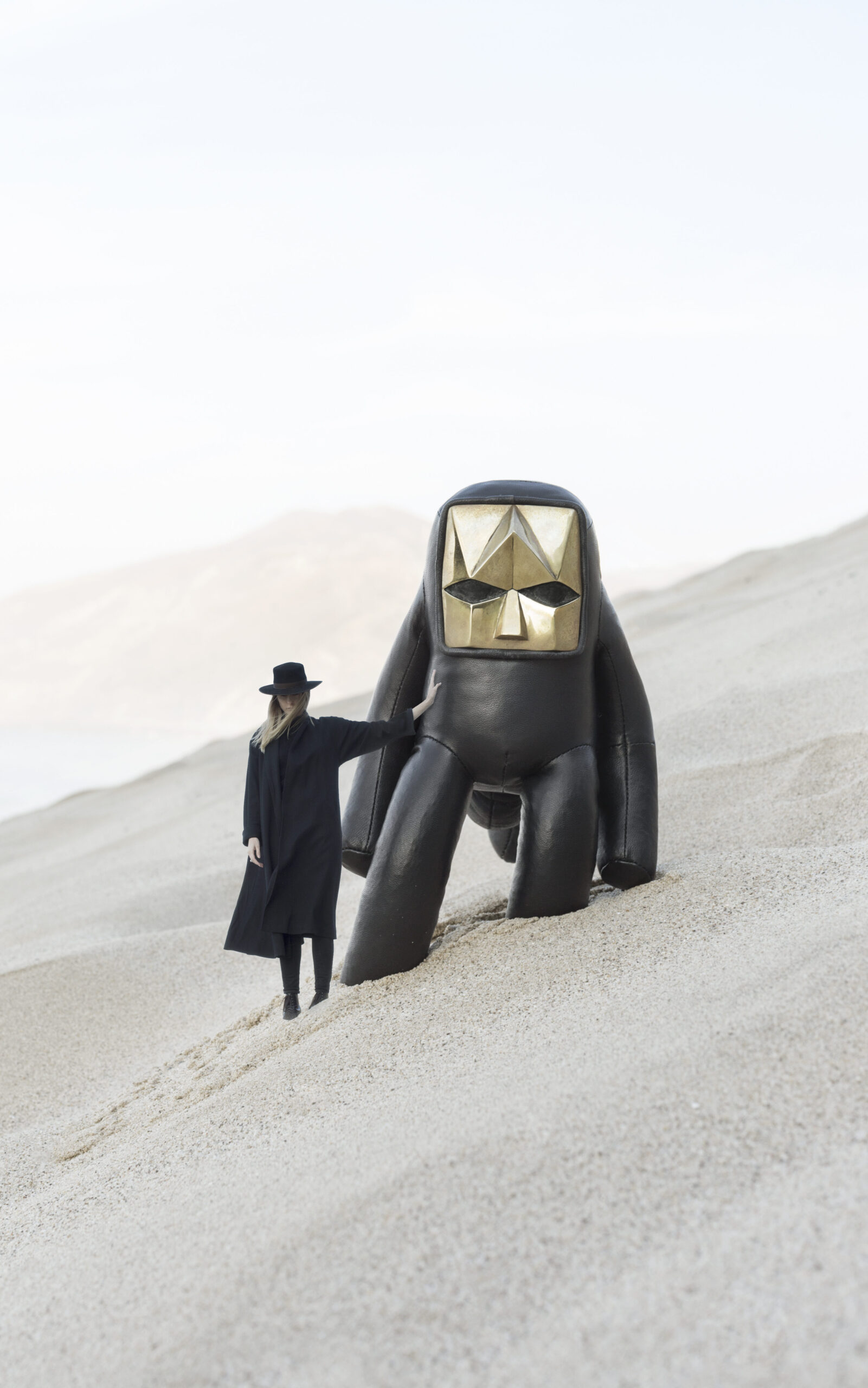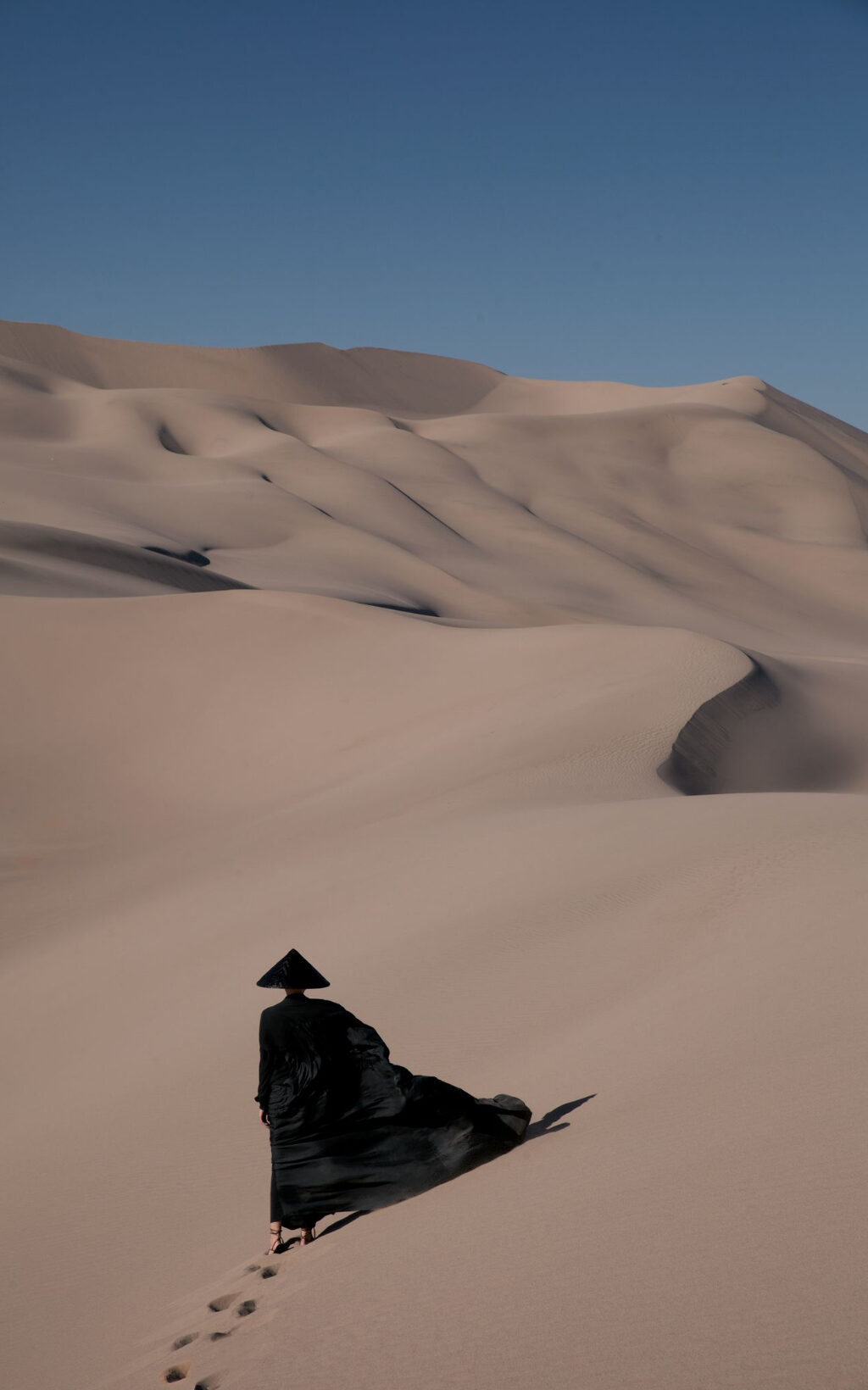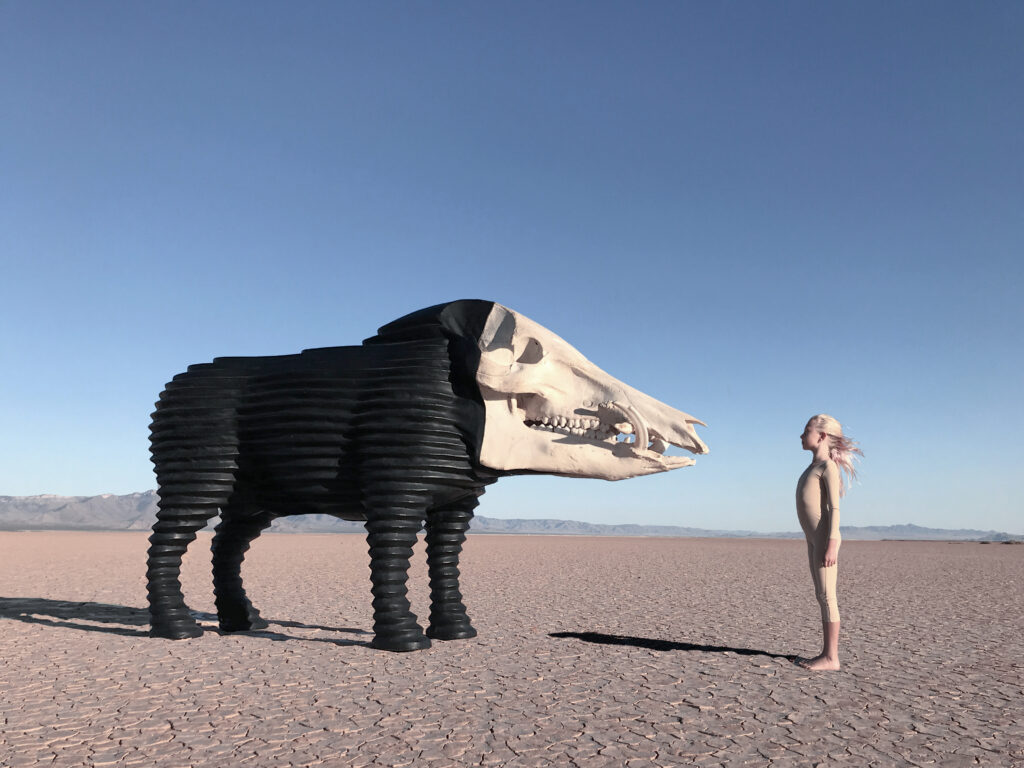Words by Amanda Vandenberg
PETECIA LE FAWNHAWK @LEFAWNHAWK



As an artist, Petecia Le Fawnhawk is inextricably connected to the arid desert landscape. Feeding off an antediluvian energy, she pieces together photomontages that capture the gleaming, pulsing, kinetic magnetism of this region of extremes. A hypnagogic collection of mirages, the imagery is high contrast, brimming with paired shadows and infinite dunes. The magic here is if you were to recant the atmosphere, these scenes could be satellite projections of exoplanet exploration, or culled from another lucid dream.
Her tableaus showcasing the figure interacting with towering sculptural works have their origin in Le Fawn- hawk’s interest in monumental land art. Knowing her own large-scale, site- dependent work was faroff in the making, she made do with the resources at hand. Collaborating with sculptors she admired (Spencer Hansen for Blamo Toys and wooden geometric works by Aleph Geddis), Le Fawnhawk began taking their small works into the desert, shooting them, shooting herself, and then in post scaling them up to create surreal, otherworldly images. Thusly, she creates monumental art that lives in a digital world.
Le Fawnhawk is in the habit of intuitively engaging with her desert environment, bringing objects occurring on a micro level to a larger-than-life degree, not only in photography, but in detailed drawings as well. Georgia O’Keeffe had a similar way of inhabiting her desert ecosystem, enduring the stinging sun and biting cold to be close to the topography that inspired her. And it’s her words about painting flowers so large to make people actually stop and appreciate them that Le Fawnhawk has taken to heart –
“When I’d go hiking, there would be this specific bone or stone or whatnot that would beg for me to pick it up and take it home. I wanted to explore that attraction and thought, ‘maybe if I make these large scale, then maybe other people would find the same connection to these objects as I have.’”


Truthfully, it becomes easy to connect to the coyote skull, twisted juniper, and dried saguaro that she brings to life. It is this manipulation of scale that achieves a visceral, emotional effect. In this same vein, Le Fawnhawk eventually wants to try her hand at her own land mass sculptures. She has visions of taking an old, European stone chapel and placing it in a hot spring in the Mexican desert. Inspired by the vertical steel towers of Richard Serra, “East-West/West-East” in the Qatar desert, she has been playing with the imagery of a vertical, dry lake. Though she’s not yet certain how logistically to keep it from crumbling, what entices her is the concept of changing the perspective of everyday landscape within the material itself. Ultimately, Le Fawnhawk is setting out to recontextualize singular elements within the desert. In working through this process, she lays claim to its natural phenomena before setting it free to be seen in a grander, supernatural light. Soon renting a house in Joshua Tree, she’ll be setting out to create her largest work yet – a 5 x 7 ft. drawing of a stone that, in reality, fits in the palm of the hand. Categorizing herself as “an intuitive sojourner, explorer, inventor, creative scientist,” Le Fawnhawk presents a desert filled with a high-noon aubade, cultivating visions into material forms

